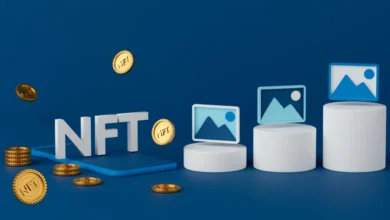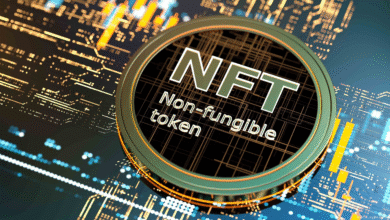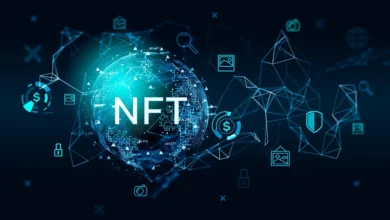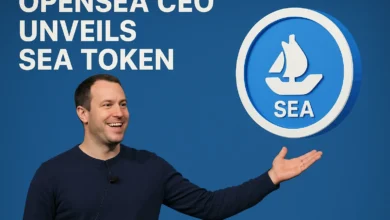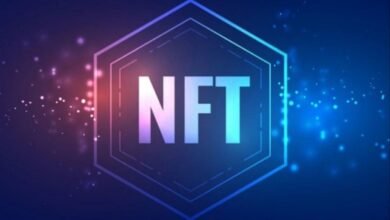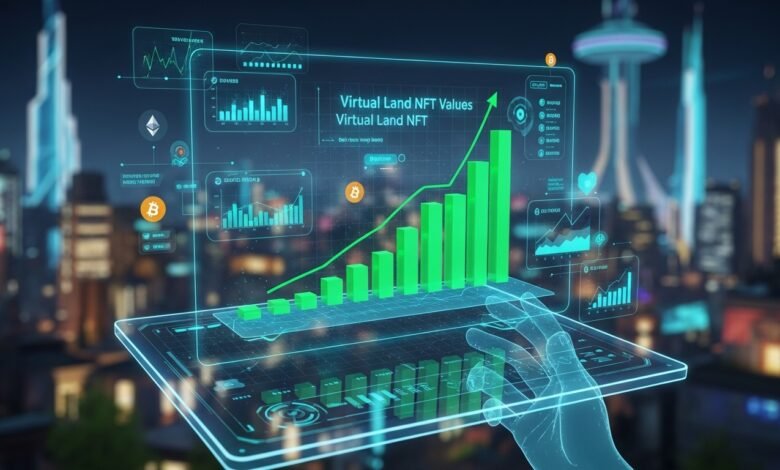
Virtual real estate has become a legitimate investment class. The virtual land NFT market represents one of the most intriguing developments in blockchain technology, where digital parcels of land within metaverse platforms are bought, sold, and developed as tokenized assets. As we navigate through 2025, this market stands at a critical juncture, having weathered the turbulent crypto winter while demonstrating remarkable resilience and adaptation.
The concept of owning digital land might have seemed fantastical just a few years ago, but today it represents a multi-billion-dollar industry attracting attention from individual investors, major corporations, and even traditional real estate developers. Platforms like Decentraland, The Sandbox, Somnium Space, and Otherside have created entire digital worlds where metaverse property serves purposes ranging from virtual event venues to digital storefronts and immersive entertainment experiences.
This comprehensive analysis examines the virtual land NFT market forecast for 2025, exploring the factors driving growth, challenges facing the industry, emerging trends, and what investors and stakeholders can expect in the coming months. Understanding this market requires looking beyond simple price speculation to grasp the fundamental utility, technological advancements, and cultural shifts that are shaping the future of digital ownership.
The Virtual Land NFT Ecosystem
The foundation of the virtual land NFT market rests on blockchain technology that enables verifiable ownership of digital assets. Unlike traditional online gaming, where items remain under the control of game developers, NFT-based virtual property grants true ownership to buyers, who can transfer, sell, or develop their parcels independently. This paradigm shift has created entirely new economic models within digital environments.
Each metaverse platform operates with its own economy, governance structure, and development tools. Some platforms emphasize creative freedom and user-generated content, while others focus on realistic simulations or specific use cases like virtual commerce. The diversity of these ecosystems creates varied investment opportunities and risk profiles that potential buyers must carefully evaluate.
The value proposition of virtual land extends beyond speculation. Prime locations near popular destinations within metaverse platforms command premium prices due to increased foot traffic and visibility. Brands and businesses establish virtual storefronts to engage with digitally-native audiences, hosting product launches, concerts, and interactive experiences that blur the lines between physical and digital retail. This utility-driven demand provides a foundation for market stability that pure collectibles often lack.
Market Size and Growth Projections for 2025
The virtual real estate market experienced explosive growth during 2021 and early 2022, with total sales reaching approximately $501 million in 2021 alone. However, the subsequent market correction throughout 2022 and 2023 saw transaction volumes decline significantly as speculative enthusiasm waned and broader economic headwinds affected risk assets across the board.
Current projections for 2025 suggest a market finding its equilibrium after the excesses of the initial boom. Industry analysts estimate the virtual land NFT market could stabilize between $1.2 billion to $2.8 billion in total transaction volume throughout 2025, representing measured growth driven by genuine utility rather than speculative fervor. This forecast accounts for increased corporate adoption, improved user experiences, and the maturation of metaverse platforms that have refined their offerings based on years of user feedback.
The growth trajectory depends heavily on several critical factors. Metaverse adoption rates among mainstream consumers will significantly influence demand for virtual property. As platforms improve accessibility through better interfaces, reduced technical barriers, and integration with popular social media and gaming ecosystems, the potential user base expands considerably. Additionally, the development of cross-platform interoperability standards could unlock new value by allowing assets to move between different metaverse environments.
Corporate investment represents another significant growth driver. Major brands that initially experimented with metaverse presence are now developing comprehensive strategies for sustained engagement. Fashion houses are creating virtual clothing lines, automobile manufacturers are showcasing digital showrooms, and entertainment companies are building persistent branded experiences. Each of these initiatives requires virtual land, creating steady institutional demand that stabilizes pricing.
Key Trends Shaping the 2025 Landscape
Several transformative trends are defining the virtual land NFT market as we progress through 2025. Understanding these developments provides insight into where opportunities and challenges lie for investors and developers alike.
Integration of Artificial Intelligence and Procedural Generation
Artificial intelligence is revolutionizing how virtual environments are created and experienced. AI-powered metaverse development tools enable landowners to rapidly design and populate their virtual properties with sophisticated content that previously required extensive technical expertise. These systems can generate buildings, landscapes, and interactive elements based on simple text prompts or conceptual descriptions, democratizing development and increasing the utility of virtual land holdings.
Procedurally generated content keeps metaverse experiences fresh and engaging, encouraging repeat visits and sustained user engagement. This technological advancement directly impacts land values, as parcels that support advanced AI integration become more desirable for developers seeking to create compelling experiences efficiently.
Emphasis on Utility and Real-World Integration
The market has decisively shifted from pure speculation toward utility-focused applications. Virtual property development now centers on creating functional spaces that serve specific purposes. Educational institutions are establishing virtual campuses for remote learning, healthcare providers are exploring telemedicine applications in immersive environments, and professional services firms are creating virtual offices for distributed teams.
This trend toward practical applications provides sustainable demand fundamentals that support long-term market health. Rather than relying solely on price appreciation, virtual landowners can generate rental income, advertising revenue, or transaction fees from economic activity occurring on their properties. These revenue streams make virtual land increasingly attractive as an income-generating asset class rather than a purely speculative investment.
Regulatory Clarity and Market Maturation
Regulatory frameworks governing digital assets continue evolving, with 2025 bringing increased clarity around taxation, ownership rights, and consumer protections in virtual environments. While regulations vary significantly across jurisdictions, the general trend toward establishing clear rules has positive implications for market stability and institutional participation.
Professional standards are emerging for virtual property valuation, development, and management. Metaverse real estate agencies now offer services comparable to traditional real estate, including property management, development consulting, and market analysis. This professionalization attracts more conservative investors who require established frameworks and professional services to enter new asset classes.
Investment Opportunities and Strategies
Navigating the virtual land NFT market requires strategic thinking and careful analysis of multiple factors. Successful investors in 2025 are those who understand platform dynamics, community engagement, and technological trends while maintaining realistic expectations about returns and risks.
Platform Selection and Due Diligence
Choosing the right metaverse platform represents the foundational investment decision. Established platforms with large user bases, strong development communities, and proven track records offer relative stability but may provide limited upside potential. Emerging platforms might offer greater appreciation opportunities but carry significantly higher risks of failure or abandonment.
Evaluating platform tokenomics, governance structures, and technical capabilities helps identify sustainable projects. Platforms with deflationary token mechanics, active development roadmaps, and engaged communities demonstrate characteristics associated with long-term viability. Decentralized metaverse platforms that empower users through governance participation often exhibit stronger community loyalty and resilience during market downturns.
Location Analysis Within Virtual Worlds
Just as location drives value in physical real estate, positioning within metaverse platforms critically affects virtual land prices and utility. Properties near popular destinations like gaming zones, social hubs, or major brand installations attract more visitors and generate higher engagement. Understanding traffic patterns, platform geography, and planned developments helps investors identify undervalued parcels with appreciation potential.
District characteristics also matter significantly. Some areas specialize in particular activities like gaming, social gathering, or commercial operations. Investing in properties aligned with growing districts or emerging trends positions landowners to benefit from category-specific growth. Analyzing historical sales data, current listings, and platform development plans provides insights for strategic acquisitions.
Development Versus Holding Strategies
Investors must decide whether to develop their virtual properties or hold undeveloped land, anticipating appreciation. Development requires additional capital and expertise but can generate ongoing revenue streams and increase property values. Creating compelling experiences, hosting events, or establishing commercial operations transforms passive holdings into active businesses within the metaverse ecosystem.
Holding strategies work best when investors identify locations likely to appreciate due to planned platform expansions, infrastructure development, or growing community interest. This approach requires patience and careful market monitoring but demands less active management than development strategies. Many successful investors employ hybrid approaches, developing some properties while holding others for longer-term appreciation.
Challenges and Risk Factors
Despite promising growth projections, the virtual land NFT market faces substantial challenges that could impact valuations and market dynamics throughout 2025. Understanding these risks helps investors make informed decisions and develop appropriate risk management strategies.
Technology and User Experience Barriers
Accessibility remains a significant obstacle for mainstream metaverse adoption. Current platforms often require cryptocurrency wallets, an understanding of blockchain transactions, and relatively powerful computing hardware. Metaverse accessibility improvements continue, but progress remains gradual, potentially limiting user growth rates and consequently demand for virtual property.
User experience quality varies dramatically across platforms, with many still offering clunky interfaces, limited social features, and shallow engagement mechanics. Until metaverse platforms achieve the polish and intuitiveness of mainstream gaming and social media applications, mass adoption will remain constrained. Technology improvements scheduled throughout 2025 address some concerns, but fundamental challenges persist.
Market Volatility and Liquidity Concerns
The virtual land NFT market exhibits significant price volatility, with valuations influenced by broader cryptocurrency market trends, platform-specific developments, and shifting investor sentiment. This volatility creates risks for investors requiring stable asset values or predictable returns. Additionally, liquidity varies considerably across platforms and property types, with some virtual land parcels taking months to sell at desired prices.
NFT market liquidity challenges become particularly acute during downturns when buyers become scarce and prices can decline precipitously. Unlike traditional real estate, where properties can be rented or repurposed, virtual land generates value primarily through platform engagement and user activity. If a platform loses popularity, associated land values can collapse rapidly regardless of previous price levels.
Competition and Platform Risk
The proliferation of metaverse platforms creates intense competition for users and investment capital. While multiple platforms can coexist successfully, network effects favor platforms that achieve critical mass first. Investors risk backing platforms that ultimately fail to gain traction, potentially losing entire investments even if the broader virtual land market thrives.
Platform policy changes represent another significant risk factor. Operators can modify economic models, governance structures, or technical capabilities in ways that affect land values. While decentralized platforms mitigate this risk through community governance, even these systems can implement changes that disadvantage certain landowners or property types.
Corporate Adoption and Institutional Investment
Institutional interest in virtual land NFTs has evolved from experimental marketing initiatives to strategic long-term investments. Major corporations now view metaverse presence as essential for reaching younger demographics and experimenting with new business models. This corporate adoption provides market stability and drives sustained demand for premium virtual real estate locations.
Fashion and luxury brands have been particularly active, recognizing the metaverse as a natural extension of their brand-building efforts. Companies are creating virtual flagship stores, hosting digital fashion shows, and selling virtual clothing and accessories. These initiatives require prime virtual real estate locations that command premium prices and generate sustained foot traffic.
Entertainment and media companies are developing persistent virtual venues for concerts, film screenings, and interactive experiences. These investments demonstrate confidence in the long-term viability of virtual environments as legitimate entertainment channels. As these corporate initiatives mature and demonstrate returns on investment, additional companies enter the space, further validating the market and supporting property values.
Financial institutions are beginning to offer services tailored to the virtual real estate investment market, including specialized lending products, valuation services, and investment funds. This professionalization brings additional capital and legitimacy to the sector while establishing industry standards that facilitate market growth and maturation.
The Role of Web3 Gaming and Social Platforms
Gaming represents the most natural application for virtual land NFTs, with play-to-earn mechanics and user-generated content creating vibrant economies within metaverse platforms. Successful games integrate virtual land ownership seamlessly into gameplay, providing utility that extends beyond simple real estate speculation. Players purchase land to establish bases, create custom game modes, or operate in-game businesses that generate revenue in platform tokens or NFTs.
Social platforms are increasingly incorporating metaverse elements, blurring boundaries between traditional social media and immersive virtual worlds. These hybrid platforms potentially offer the fastest path to mainstream adoption, leveraging existing user bases while gradually introducing more sophisticated virtual environment features. Social metaverse platforms typically emphasize accessibility and ease of use over technical complexity, making them attractive entry points for users unfamiliar with blockchain technology.
The convergence of gaming, social interaction, and virtual real estate creates powerful network effects that drive platform growth and land values. As platforms successfully integrate these elements, they attract diverse user bases that sustain long-term engagement and economic activity. Understanding which platforms are successfully achieving this integration helps investors identify promising opportunities.
Conclusion
The virtual land NFT market enters 2025 at a fascinating crossroads between its speculative origins and its potential future as a legitimate component of the broader digital economy. While the explosive growth rates of 2021 are unlikely to repeat, the market demonstrates genuine maturation with utility-driven demand replacing pure speculation as the primary price driver.
Investors and stakeholders should approach this market with balanced perspectives that acknowledge both significant opportunities and substantial risks. The most promising outlook exists for virtual properties on platforms that successfully combine engaging user experiences, sustainable economic models, and genuine utility. Corporate adoption and improving technology continue to expand the addressable market, supporting measured growth projections throughout 2025.
Success in this market requires ongoing education, strategic thinking, and realistic expectations. The virtual land NFT market represents an emerging asset class that rewards those who understand platform dynamics, community engagement, and technological trends while maintaining appropriate risk management strategies. As digital and physical worlds continue converging, virtual real estate will likely occupy an increasingly important role in how we work, socialize, and conduct commerce in the decades ahead.
FAQs
Q: Is virtual land a good investment in 2025?
Virtual land can be a viable investment for those who understand the market dynamics and associated risks. The key is focusing on established platforms with active user bases and genuine utility rather than purely speculative projects. Successful investors typically diversify across multiple platforms.
Q: How do I determine the value of virtual land before purchasing?
Valuing virtual land requires analyzing multiple factors including location within the platform, proximity to popular destinations, historical sales data for comparable properties, current listing prices, and platform traffic metrics. Professional metaverse real estate services now offer valuation reports similar to traditional real estate appraisals.
Q: What are the tax implications of buying and selling virtual land NFTs?
Tax treatment of virtual land NFTs varies by jurisdiction but generally follows capital gains principles. In many countries, selling virtual land for a profit creates a taxable event subject to capital gains rates, while losses may be deductible.
Q: Can I generate passive income from virtual land holdings?
Yes, virtual land can generate passive income through several mechanisms. Developed properties can be rented to other users for events, advertising, or business operations. Some platforms offer revenue sharing on economic activity occurring on your land.
Q: How does virtual land ownership differ from traditional real estate?
Virtual land ownership differs fundamentally in that it represents digital assets recorded on blockchains rather than physical property with tangible use. Virtual land faces technology obsolescence risks if platforms lose popularity, unlike physical real estate, which retains intrinsic utility.




